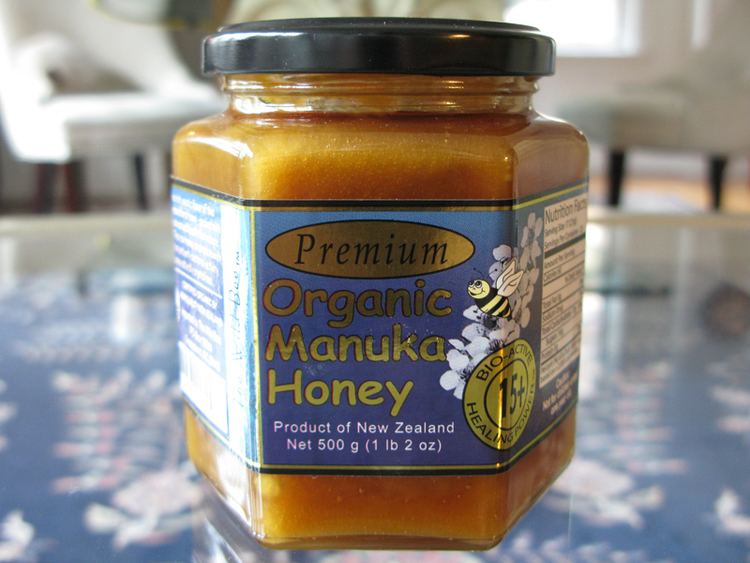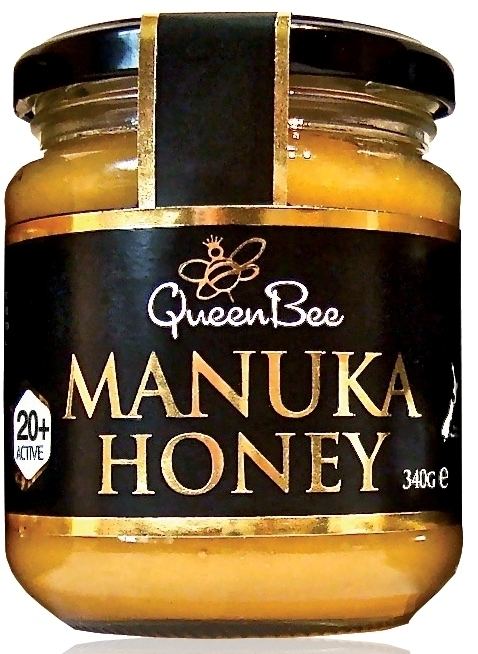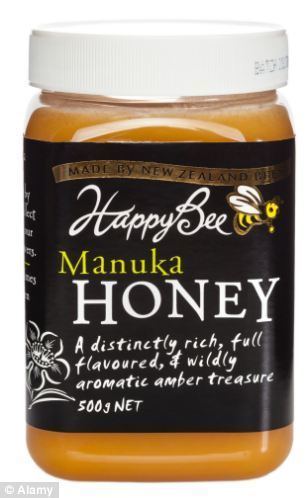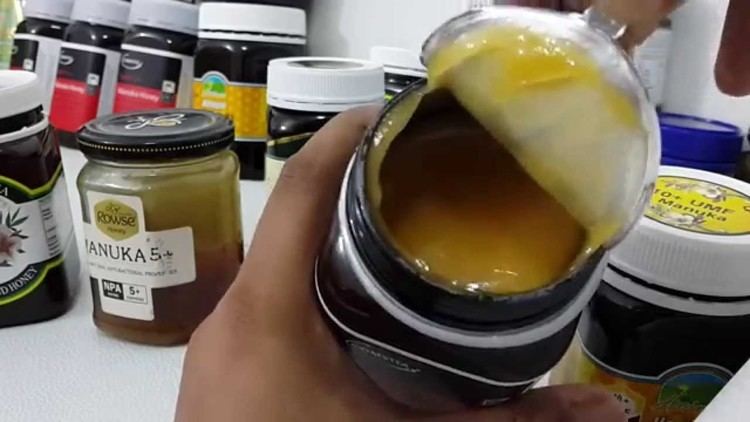 | ||
Similar Honey, Rose hip, Turmeric, Fennel flower, Shea butter | ||
Mānuka honey is a monofloral honey produced in Australia and New Zealand from the nectar of the mānuka tree. The honey is commonly sold as an alternative medicine. While a component found in mānuka honey has antibacterial properties in vitro, there is no conclusive evidence of medicinal or dietary value other than as a sweetener.
Contents

Identification

Mānuka honey is produced by introduced European honey bees (Apis mellifera) foraging on the mānuka or tea tree (Leptospermum scoparium) which grows uncultivated throughout New Zealand and southeastern Australia.

Mānuka honey is markedly viscous, having the highest viscosity among a range of honeys. This property is due to the presence of a protein or colloid and is its main visually defining character, along with its typical dark cream to dark brown colour. To be labelled New Zealand mānuka honey, at least 70% of its pollen content should come from Leptospermum scoparium.

The mānuka tree flowers at the same time as Kunzea ericoides, another Myrtaceae species also called kānuka, which often shares the same growing areas. Some apiarists cannot readily differentiate these species, as both flowers have similar morphology and pollen differentiation between the two species is difficult. Therefore, melissopalynology as identification for the type of honey is valid only in association with other identification tests. In particular, L. scoparium honey is dark, whereas K. ericoides honey is pale yellow and clear, with a "delicate, sweet, slightly aromatic" aroma and a "sweet, slightly aromatic" flavour, and is not viscous.

Heather (Calluna vulgaris) honey is also viscous, but the plant flowers in late summer and its mountain distribution in north temperate Europe and central Asia does not correspond with that of Leptospermum scoparium. Therefore, its harvest cannot be mistaken for that of manuka honey.
Food

Mānuka honey has a strong flavour, characterised as "earthy, oily, herbaceous", and "florid, rich and complex". It is described by the New Zealand honey industry as having a "damp earth, heather, aromatic" aroma and a "mineral, slightly bitter" flavour.
Research

There is insufficient evidence from existing studies to conclude that honey helps improve superficial burns or leg ulcers compared to a standard dressing. Mānuka honey also does not reduce the risk of infection following treatment for ingrown toenails.
Preliminary studies indicate that methylglyoxal is an antibacterial component of mānuka honey.
Adulteration
As a result of the high premium paid for mānuka honey, an increasing number of products now labelled as such worldwide are counterfeit or adulterated. According to research by UMFHA, the main trade association of New Zealand mānuka honey producers, whereas 1,700 tons of mānuka honey are made there annually representing almost all the world's production, some 10,000 tons of produce is being sold internationally as mānuka honey, including 1,800 tons in the UK.
In governmental agency tests in the UK between 2011 and 2013, a majority of mānuka-labelled honeys sampled lacked the non-peroxide anti-microbial activity of mānuka honey. Likewise, of 73 samples tested by UMFHA in Britain, China and Singapore in 2012-13, 43 tested negative. Separate UMFHA tests in Hong Kong found that 14 out of 56 mānuka honeys sampled had been adulterated with syrup. In 2013, the UK Food Standards Agency asked trading standards authorities to alert mānuka honey vendors to the need for legal compliance.
There is a confusing range of systems for rating the strength of mānuka honeys. In one UK chain in 2013, two products were labelled “12+ active” and “30+ total activity” respectively for “naturally occurring peroxide activity” and another “active 12+” in strength for “total phenol activity," yet none of the three was labelled for the strength of the non-peroxide antimicrobial activity specific to mānuka honey.
There have been increasing turf disputes between producers operating close to large mānuka tree clumps, and also cases reported of many hives being variously sabotaged or stolen.
One British supermarket has taken to stocking jars of the honey in tagged security cassettes, such were the losses from shoplifting.
